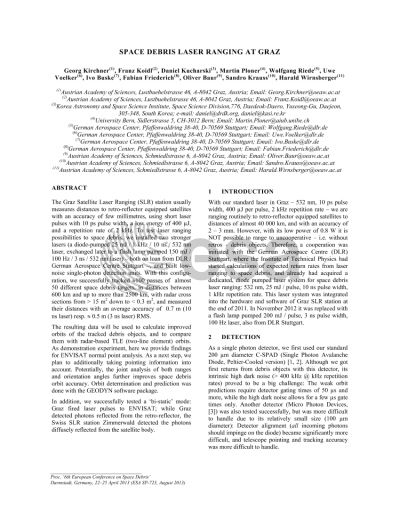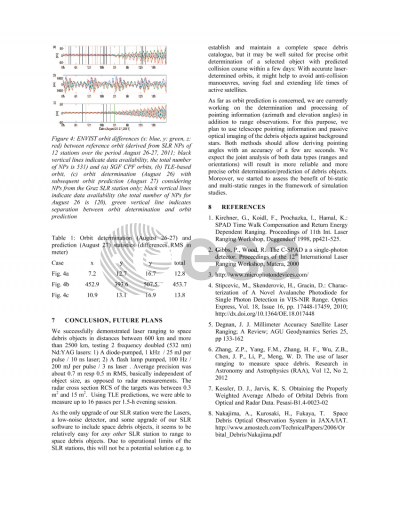Document details

Abstract
The Graz Satellite Laser Ranging (SLR) station usually measures distances to retro-reflector equipped satellites with an accuracy of few millimetres, using short laser pulses with 10 ps pulse width, a low energy of 400 muJ, and a repetition rate of 2 kHz. To test laser ranging possibilities to space debris, we installed two stronger lasers (a diode-pumped 25 mJ / 1 kHz / 10 ns / 532 nm laser, exchanged later to a flash lamp pumped 150 mJ / 100 Hz / 3 ns / 532 nm laser) - both on loan from DLR / German Aerospace Centre Stuttgart -, and built lownoise single-photon detection units. With this configuration, we successfully tracked ≈ 100 passes of almost 50 different space debris targets, in distances between 600 km and up to more than 2500 km, with radar cross sections from > 15 m2 down to < 0.3 m2 , and measured their distances with an average accuracy of 0.7 m (10 ns laser) resp. ≈ 0.5 m (3 ns laser) RMS. The resulting data will be used to calculate improved orbits of the tracked debris objects, and to compare them with radar-based TLE (two-line element) orbits. As demonstration experiment, here we provide findings for ENVISAT normal point analysis. As a next step, we plan to additionally taking pointing information into account. Potentially, the joint analysis of both ranges and orientation angles further improves space debris orbit accuracy. Orbit determination and prediction was done with the GEODYN software package. In addition, we successfully tested a 'bi-static' mode: Graz fired laser pulses to ENVISAT; while Graz detected photons reflected from the retro-reflector, the Swiss SLR station Zimmerwald detected the photons diffusely reflected from the satellite body.
Preview





